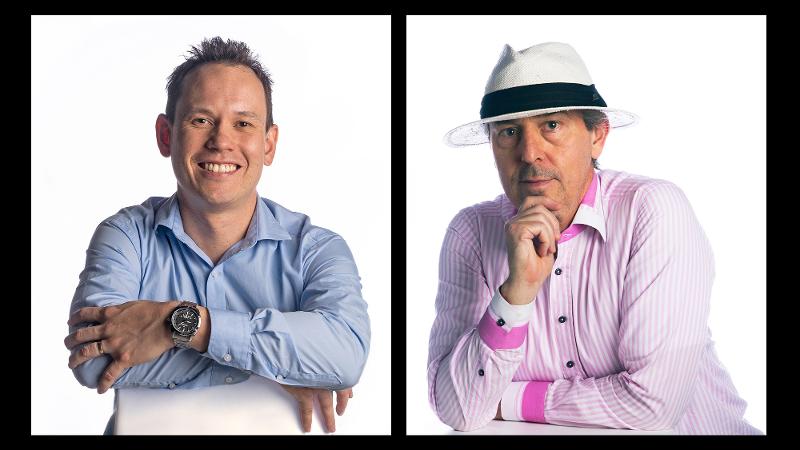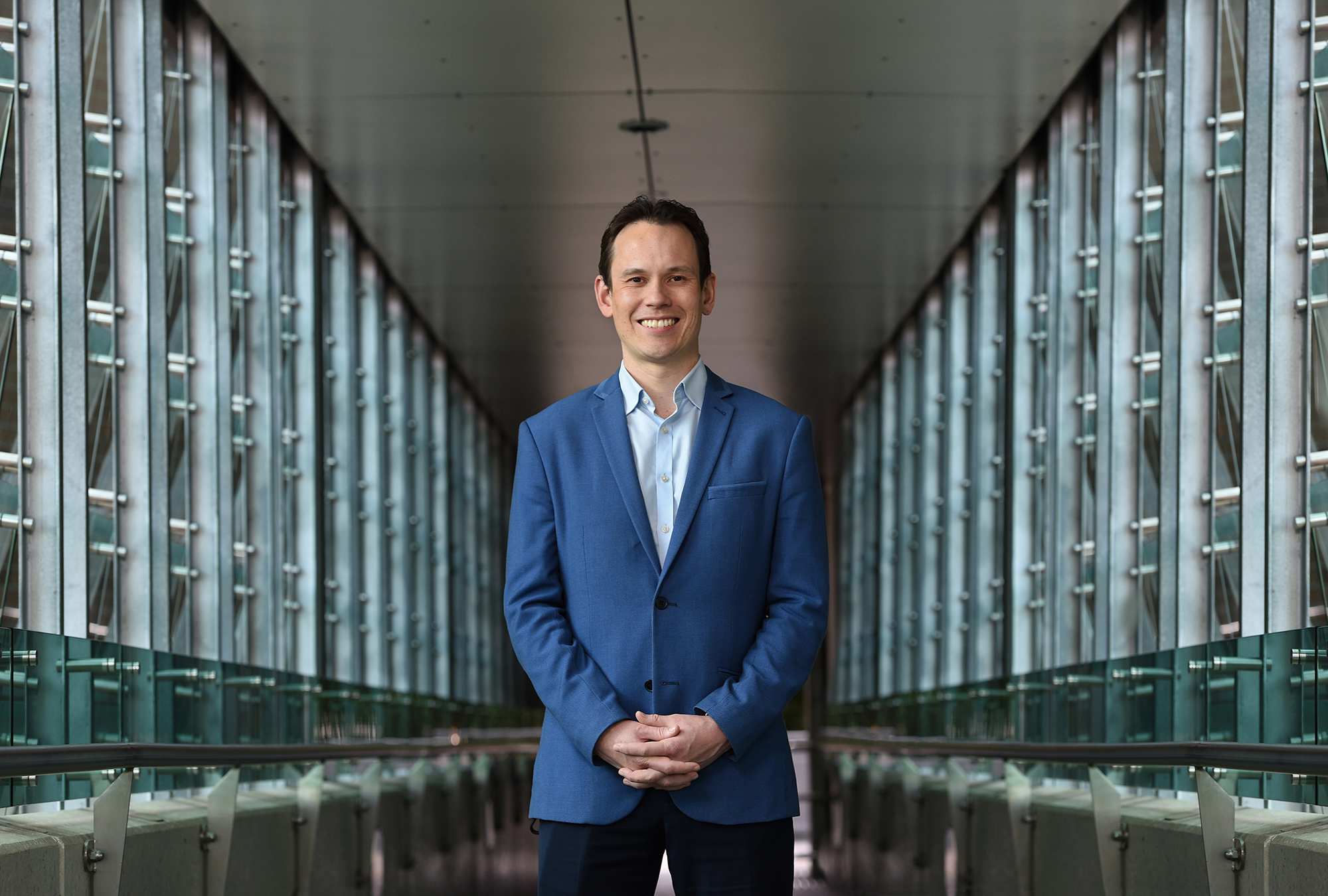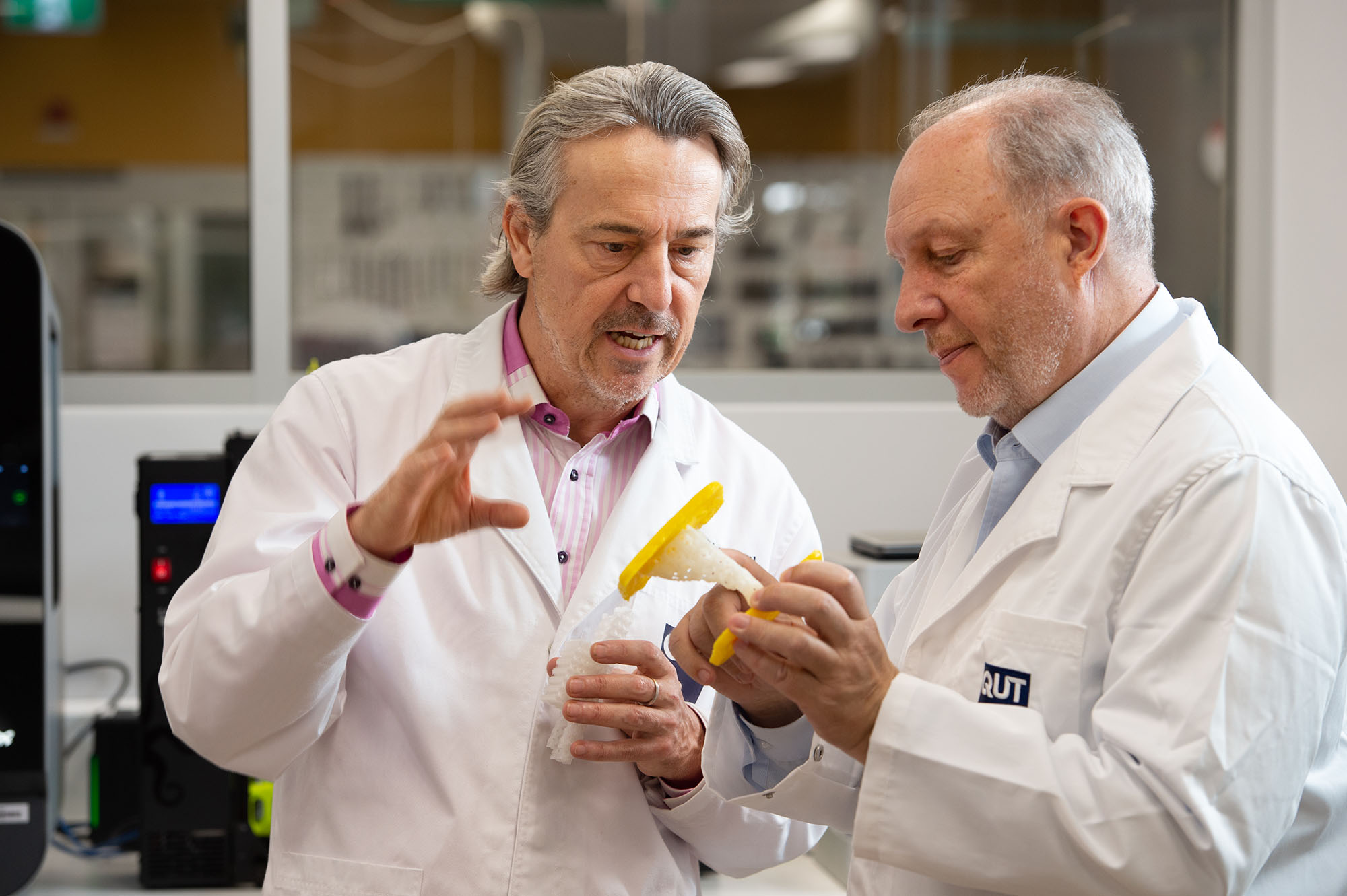
Two QUT researchers – one an expert in neuroscience-based robotic navigation, the other a leading light in regenerative medicine – have been made fellows of the Australian Academy of Technological Sciences and Engineering (ATSE).
They are:
Professor Michael Milford FTSE – Neuroscience-to-navigation translator

Professor Milford is a leading researcher in neuroscience-based robotic navigation. He works closely with industry and government developing high-performance positioning systems for robotics and autonomous vehicles.
He is at the forefront of visual place recognition technology, pioneering new methods for use in mission-critical contexts, including collaborations with Ford and Caterpillar.
“We’re improving the navigation capabilities of robotics and autonomous vehicles by combining models of the best performing and best understood navigation systems found in nature,” said Professor Milford, joint director at the QUT Centre for Robotics.
“Robotics and artificial intelligence can transform the world in all the right ways, but we need to better understand intelligence and how to best recreate it before this can become a reality.'
Professor Milford’s world-first advancements translating abstract neuroscience into technology for real-world commercial applications were recognised by ATSE in 2019 with the award of the Batterham Medal for engineering excellence.
For more than 20 years, Michael has created STEM educational resources for students. He is also an Australian Research Council Laureate Fellow, QUT (Qld).
Distinguished Professor Dietmar W Hutmacher FTSE – Tissue engineering & regenerative medicine

with Distinguished Professor Dmitri Golberg
Professor Hutmacher is a global leader in scaffold-guided tissue regeneration (SGBR) whereby patient-specific scaffolds are designed and manufactured using a cutting-edge 3D printing technology platform, then implanted.
“SGBR technology has repaired leg bones and badly damaged skulls and corrected congenital deformities. It is approved by US and European authorities, with more than 70,000 patients having been treated worldwide,” Professor Hutmacher said.
“When compared with titanium implants, SGBR is life-changing because implant removal is not required, transforming treatment of large bone defects, especially for skull defects and corrective surgery for babies and children.”
Professor Hutmacher’s career and work combines academia and industry. His research has led to six spinoff companies and has pioneered ways to integrate tissue engineering technology into cancer research.
He is Chair in Regenerative Medicine, QUT and co-director, Max Planck Queensland Centre for the Materials Science of Extracellular Matrices (QLD).
Media contact:
Rod Chester, QUT Media, 07 3138 9449, rod.chester@qut.edu.au
After hours: 0407 585 901, media@qut.edu.au


